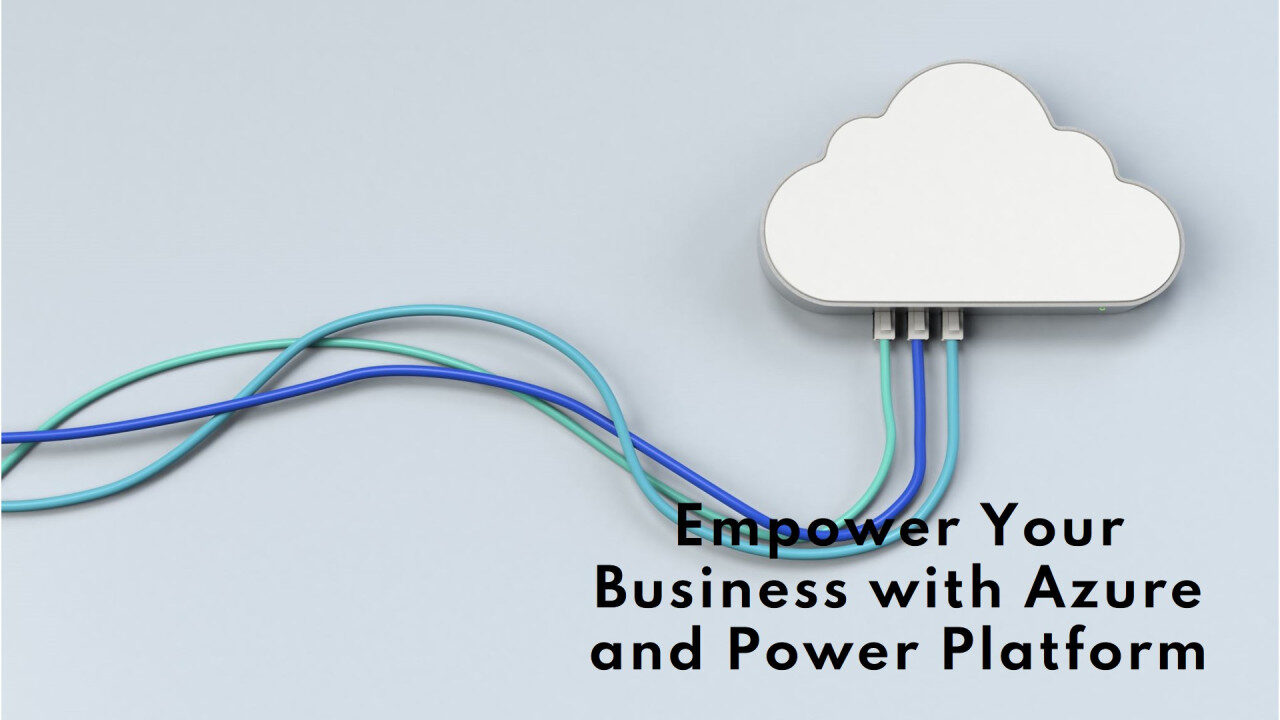

Continuing my #30YearsInIT series, I reflect on a transformative chapter that began in 2020, when I joined a company that pushed my knowledge boundaries like never before. This period was defined by two key pillars of the Microsoft ecosystem; Azure and the Power Platform. While the journey included many elements of Service desk Management, Change Management, and M365 projects, it was the deep dive into Azure and Power Platform that made these years truly remarkable and transformative for both myself and the organisation I worked with.
When joining this company, I took on the role of a Senior IT Consultant, a position that would immerse me in the huge scope of Microsoft Azure. It was a role that presented new challenges every day, demanding continuous learning and a drive to succeed. Azure is not just a cloud platform; it’s a network of interconnected services designed to help businesses achieve scalability, security, and flexibility in their IT environments. Over the next two years, I found myself delving into multiple areas of Azure, each requiring me to stretch my capabilities and embrace continuous learning.
One of the standout areas was Security and Compliance. As the organisation pushed toward the UK IASME Cyber Essentials Plus accreditation, I learned first-hand the importance of secure cloud architecture. This included understanding Azure Security Centre, implementing Network Security Groups (NSGs), and ensuring data integrity and security within Azure Storage. Compliance frameworks (GDPR, DPA2018, etc,.), particularly within the UK regulatory environment, played a significant role in shaping the cloud configurations. Azure’s comprehensive suite of security tools allowed the organisation to set up robust systems, providing reassurance that our cloud assets were secure from evolving threats.
Azure was not just about security; it was also about building and managing infrastructure at scale. I gained knowledge and experience in setting up and managing Virtual Machines (VMs) that I now have running within my own Microsoft tenant, understanding how to balance cost and performance effectively. Using Azure Monitor and Log Analytics, I gained insight into application performance, availability, and the operational health of services. Additionally, Azure’s Virtual Network (VNet) capabilities enabled the organisation to create secure, isolated networks for different applications, ensuring both flexibility and security in the cloud architecture.
Azure’s role in Mobile Device Management (MDM) and Mobile Application Management (MAM) also stood out as particularly valuable. Using Microsoft Intune, we were able to ensure that mobile devices whether corporate-owned or BYOD adhered to the security policies, providing controlled access to company resources. This helped facilitate remote working and reinforced our commitment to security, particularly in a landscape where flexible work arrangements were becoming increasingly essential.
Another intriguing area was the use of Azure Logic Apps. These serverless workflows allowed us to automate numerous business processes, connect disparate systems, and ultimately simplify complex workflows. This was particularly beneficial when managing the integration between Azure services and Microsoft 365, streamlining processes and reducing manual tasks.
In 2024, Microsoft has made significant updates across its Azure services, including enhanced security for cloud-native applications. For example, Azure Chaos Studio now supports resource tags, which adds another layer of structured security across services, a feature beneficial for organisations seeking robust control and governance in cloud operations. Additionally, Azure Monitor expanded its pipeline capabilities to edge environments, which helped businesses gather high-scale data insights beyond traditional boundaries, supporting a more comprehensive operational picture.
Alongside my work in Azure, I was engaged substantially more with the Power Platform, and this has become another major component of my journey. The Power Platform encompasses Power BI, PowerApps, Power Automate, Power Pages, and Power Virtual Agents, and is focused on empowering individuals within an organisation to solve business challenges through data insights, application development, and workflow automation.
Power BI quickly became an invaluable tool for the organisation. Its ability to create interactive dashboards and detailed visualisations enabled us to extract insights from data that previously would have been buried within spreadsheets. For both the internal teams and the clients, the reports and dashboards created in Power BI provided actionable intelligence that drove decision-making. Being able to pull data from multiple sources and create real-time visualisations was not only a technical achievement but also a huge driver for improved business agility.
Over time, I began to explore the capabilities of PowerApps and Power Automate. PowerApps allowed the creation of custom applications that suited the unique needs of the organisation, with a particular emphasis on modernising (and replacing) legacy processes. These applications were often built effectively to best practices and could be deployed without extensive developer resources, providing a cost-effective way to solve business challenges. The process of understanding the user requirements, designing a user interface, and iterating based on feedback was rewarding and showcased how technology can directly meet business needs.
Power Automate was another game-changer. By automating repetitive tasks, the organisation was able to free up valuable time for team members to focus on more strategic initiatives. From simple workflows that handled document approvals to more complex integrations across different services, Power Automate helped to simplify many aspects of daily operations. It was gratifying to see how automation could impact productivity, and this made me appreciate even more the value of tools that allow businesses to work smarter, not harder.
The Power Platform has evolved significantly since its initial inception, with Power BI now integrating deeply with Azure services like Azure Synapse Analytics for advanced data processing and analysis. This integration allows businesses to create seamless data workflows, from data import to business intelligence visualisation, enhancing the way companies interact with their data.
This chapter of my career taught me more than just technical skills; it taught me the importance of resilience and a growth mindset. Azure and Power Platform presented new challenges every day, but it was in facing these challenges that real growth occurred. The UK IASME Cyber Essentials Plus accreditation pushed us to meet high standards of security and compliance, but beyond that, it instilled a discipline that has stayed with me throughout my IT journey.
The continuous learning that Azure and Power Platform demanded was invaluable. The ability to stay curious, adapt, and always strive for improvement is what keeps an IT professional at the forefront of the industry. It also reinforced the notion that technology is only as effective as the people managing it. My experience in Azure and Power Platform made me appreciate the interplay between tools, knowledge, and human ingenuity in delivering impactful results.
Reflecting on my journey from 2020 to 2022, the combination of working with some amazing people, with Microsoft Azure and the Power Platform, and managing day-to-day IT ServiceDesk responsibilities as well as working and delivering on client projects, provided an incredible opportunity for growth.
Azure exposed me more to the complexities of cloud security, compliance, and scalable infrastructure, while the Power Platform allowed me to see first-hand the power of data visualisation, low-code applications, and automation.
The experience reaffirmed that success in IT is driven by a willingness to learn continuously and to tackle daily challenges head-on. Microsoft Azure and Power Platform are not just technologies they are enablers for businesses, allowing them to become more agile, data-driven, and secure. For any organisation considering its next steps in the cloud or looking to innovate through automation and business intelligence, Azure and Power Platform represent a compelling path forward.

Microsoft Solution Architect, Senior Project Manager, and Mental Health Advocate